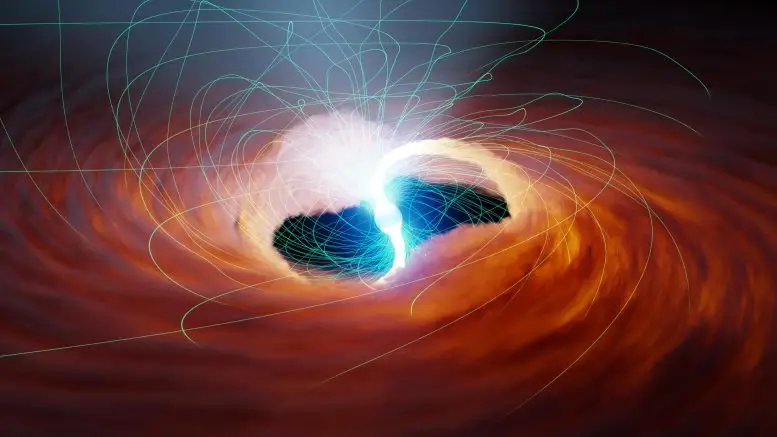NASA reveals secret of ultraviolet X-ray radiation
- April 29, 2023
- 0
Exotic space objects, known as ultraviolet X-ray sources, generate about 10 million times more energy than the Sun. In fact, they are so bright that they seem to
Exotic space objects, known as ultraviolet X-ray sources, generate about 10 million times more energy than the Sun. In fact, they are so bright that they seem to

Exotic space objects, known as ultraviolet X-ray sources, generate about 10 million times more energy than the Sun. In fact, they are so bright that they seem to exceed a physical limit called the Eddington limit, which limits how bright an object can be based on its mass. Ultra-bright X-ray sources (ULX for short) regularly exceed this limit by 100-500 times, baffling scientists.
In a recently published study Astrophysical Journal, researchers report a first-of-its-kind ULX measurement made with NASA’s Nuclear Spectroscopic Telescope Array (NuSTAR). The finding confirms that these light emitters are indeed as bright as they appear and violate the Eddington limit. The hypothesis suggests that this incredible brightness is due to ULX’s strong magnetic fields. But scientists can only test this idea with observations: ULX’s magnetic fields, billions of times stronger than the strongest magnets ever created on Earth, cannot be reproduced in the laboratory.

Illustration of the NuSTAR spacecraft with a 30-foot (10-meter) mast separating the optical modules (right) from the focal plane detectors (left). This separation is essential for the method used to detect X-rays.
Particles of light called photons exert a small force on the objects they collide with. If a space object like the ULX emits enough light per square meter, the outward repulsion of photons can overcome the object’s inward gravitational pull. When this happens, the object has reached the Eddington limit and the light from the object will theoretically repel any gas or other material falling on it.
This key is important when light outweighs gravity because the material falling on the ULX is the source of its shine. This is what scientists often observe in black holes: When strong gravity attracts stray gas and dust, these materials can heat up and emit light. Scientists previously believed that ULXs were black holes surrounded by reservoirs of bright gas. But data from NuSTAR in 2014 revealed that the ULX, called M82 X-2, is actually a less massive object called a neutron star. Like black holes, neutron stars form when a star dies and collapses, compressing more than our Sun’s mass from a medium-sized city into a not-so-large area.
This incredible density also creates a gravitational force on the surface of the neutron star, about 100 trillion times stronger than the gravitational force on the Earth’s surface. Gas and other material pulled by this gravity are accelerated millions of miles per hour as they collide with the surface of the neutron star, releasing enormous energy. (A marshmallow falling on the surface of a neutron star hits it with the energy of a thousand hydrogen bombs.) This creates the high-energy X-ray light that NuSTAR detected.
A recent study targeted the same ULX that formed the basis of the 2014 discovery and found that as a cosmic parasite, M82 X-2 steals about 9 billion trillion tons of material per year, or about 1.5 times more, from its nearby star. Earth mass By knowing the amount of material hitting the surface of the neutron star, scientists can estimate how bright the ULX should be, and their calculations are consistent with independent measurements of its brightness. The study confirmed that the M82 X-2 had crossed the Eddington boundary.
If scientists can confirm the brightness of more ULXs, they could challenge the hypothesis that explains the apparent brightness of these objects without the ULXs exceeding the Eddington limit. This hypothesis, based on observations of other space objects, proposes that strong winds form a hollow cone around the light source, concentrating most of the radiation in one direction. If you point the cone directly at Earth, it can create a kind of optical illusion, giving the false impression that the ULX has exceeded its brightness limit.
Even if that may be the case for some ULXs, an alternative hypothesis supported by the new work suggests that strong magnetic fields transform roughly spherical atoms into elongated string-like shapes. This will reduce the photons’ ability to repel atoms, ultimately increasing the object’s maximum possible brightness.
“These observations allow us to see the effects of these incredibly powerful magnetic fields that we could never reproduce on Earth with current technology,” said Matteo Bacchetti, an astrophysicist from the Cagliari Observatory of the National Institute of Astrophysics in Italy and lead author of the study. latest work. . “That’s the beauty of astronomy. By observing the sky, we expand our ability to discover how the universe works. On the other hand, we can’t do experiments to get quick answers; we have to wait for the universe to reveal its secrets to us.”
Source: Port Altele
As an experienced journalist and author, Mary has been reporting on the latest news and trends for over 5 years. With a passion for uncovering the stories behind the headlines, Mary has earned a reputation as a trusted voice in the world of journalism. Her writing style is insightful, engaging and thought-provoking, as she takes a deep dive into the most pressing issues of our time.